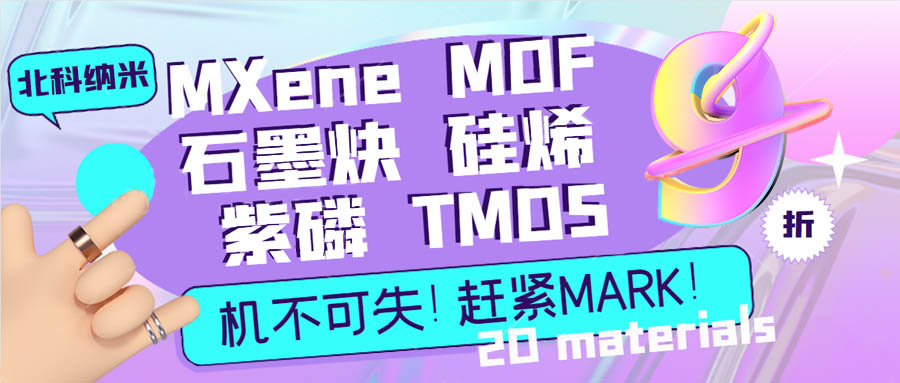Nano Energy: MXene/PDMS Triboelectric Nanogenerator Flexible Electrode
QQ Academic Group: 1092348845
Detailed

MXene is a two-dimensional star material that is even hotter than graphene. As an advanced MXene manufacturer, North Konami offers special offers, 10% off mxene and other materials, and North Konami launches new mesoporous material products with more preferential prices , waiting for you to spike! picture


The demand for wearable electronics has increased and expanded over the past few decades. Currently, lightweight, flexible, wearable, waterproof, durable, and comfortable wearable devices are widely used in mobile electronics, biosensors, and health monitoring. Efforts are being made to develop corresponding power sources with considerable flexibility and durability (eg, wearable lithium batteries, supercapacitors). However, current power supplies often require frequent charging or must be replaced after use, greatly limiting their potential practical applications. It is necessary to develop a new energy harvesting technology to address this obstacle and provide a sustainable source of energy for wearable electronics.

Recently, Professor Dae Joon Kang of Sungkyunkwan University published a research paper titled: Flexible single-electrode triboelectric nanogenerators with MXene/PDMS composite film for biomechanical motion sensors in the internationally renowned academic journal Nano Energy. To develop flexible, durable, and washable high-output performance single-electrode triboelectric nanogenerators (STENGs), a PDMS/MXene composite film with higher output power was demonstrated for the first time in this work. It has excellent durability under extreme deformation (folding and rolling) and is waterproof after washing. To verify the practicality of flexible STENGs for converting external mechanical energy generated by human activities into electrical energy, a manual hammering test was performed. The flexible STENG (2 × 4 cm2) directly powers 80 commercial green light-emitting diodes (LEDs) through a continuous human hand hammering motion without additional energy storage devices. In further practical applications, the device is mounted on human fingers and legs as human motion sensors to detect finger tapping, clapping, and hammering. This innovative design provides an attractive concept for various wearable electronic devices and flexible self-powered systems.


Figure 1. MXene material preparation and sensor assembly.

Figure 2. Physical characterization analysis of the material.
 ture
tureFigure 3. Material structure and sensing principle analysis.

Figure 4. Characterization of sensor sensing performance.

Figure 5. Lit LED test.

Figure 6. Human activity monitoring.

In this paper, a wearable flexible STENG composed of an MXene/PDMS composite film and a Cu-Ni/textile substrate is proposed. When pigskin was used to simulate human skin, the maximum output of a flexible STENG with an area of 1 × 1 cm2 was obtained by periodic compression under a force of 12 N (Vpp-oc up to 170 V and Ipp-sc up to 20 μA cm- 2). In practical applications, the Vpp-oc and Ipp-sc of the flexible STENG (2 × 4 cm2) reach 225 V and 30 μA cm-2, respectively, under continuous human hammer action. Such a high output power illuminates 80 LED lights without using additional energy storage devices. When the STENG is artificially compressed periodically, the voltage of the commercial capacitor rises rapidly (about 0.23 V/min). Furthermore, the device acts as a biomechanical sensor to realize human motion detection (finger tap, clapping, and hand tap), showing its application potential in wearable self-powered sensing systems.


- Previous: Nature Communication:
- Next: MXene breakthrough: Na


 mxene academic
mxene academic
